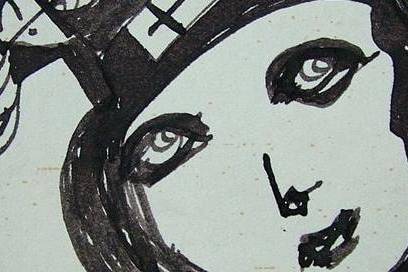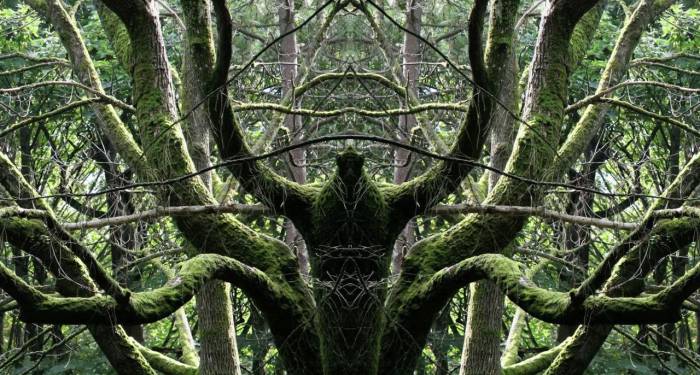Paperbridge: A Red Paper Bridge in the English Landscape
The English Lake District houses one of the most evocative site-specific installations ever.
This is perhaps one of the most evocative pieces of land art there is, but it is not easy to say exactly why. It is a scarlet paper bridge in the middle of a bucolic plain in the English Lake District. A red arch that spent just ten days as a focal point and then… it disappeared.
The PaperBridge was small, barely long enough to cross a narrow stream in Grisedale Valley, about an hour from the nearest town. The Lake District has a long and significant history in the perception of landscape and its aesthetic (let’s recall the famous Lake Poets, for example: William Wordsworth, Samuel Taylor Coleridge and Robert Southey, among others). The piece functioned as a balance between the landscape and the stream, a brushstroke that appears to not intervene in the scene but rather link its parts. But its greatest quality was its material: 20,000 sheets of paper (and no glue).
The structure is a self-sustained arch, with the firmly folded paper practically leaning on itself. In theory, the bridge could hold its own weight: up to four tons. But the artist, Steve Messam, never put it to the test, using only scale models. The scarlet bridge only stood for ten days, but it survived rain and storms; in fact, the inclement weather only made it stronger.
By not being protected with any waterproof material, the rain made the fibers swell and, because the bridge was compressed, there was no room for the paper to expand and it simply strengthened. It became a kind of concrete. Messam is certain that the bridge could have survived for much longer, but it was only an ephemeral installation.
PaperBridge was a site-specific piece: built for exactly that place. But not only that, the paper used was made specially by Burnside Mill, a colored paper factory in Cumbria. Burnside Mill is “the only paper factory in the world capable of producing paper of such a vibrancy and color under the environmental standards required,” Messam says on his website. In other words, the bridge could not have been made anywhere else except in the county of Cumbria.
After dismantling the bridge, all the paper used in the piece was returned to the same factory for recycling. “The transparent cycle is part of the overall environmental narrative of the piece,” Messam explains.
The bridge existed for us, carrying on its span a perfect landscape balance, wholly new and vibrant. The Lake District now has a red point to add to its long history of appreciation of nature.
Related Articles
Pictorial spiritism (a woman's drawings guided by a spirit)
There are numerous examples in the history of self-taught artists which suggest an interrogation of that which we take for granted within the universe of art. Such was the case with figures like
Astounding fairytale illustrations from Japan
Fairy tales tribal stories— are more than childish tales. Such fictions, the characters of which inhabit our earliest memories, aren’t just literary works with an aesthetic and pleasant purpose. They
A cinematic poem and an ode to water: its rhythms, shapes and textures
Here lies One Whose Name was writ in Water. - John Keats Without water the equation of life, at least life as we know it, would be impossible. A growing hypothesis holds that water, including the
Watch beauty unfold through science in this "ode to a flower" (video)
The study of the microscopic is one of the richest, most aesthetic methods of understanding the world. Lucky is the scientist who, upon seeing something beautiful, is able to see all of the tiny
To invent those we love or to see them as they are? Love in two of the movies' favorite scenes
So much has been said already, of “love” that it’s difficult to add anything, much less something new. It’s possible, though, perhaps because even if you try to pass through the sieve of all our
This app allows you to find and preserve ancient typographies
Most people, even those who are far removed from the world of design, are familiar with some type of typography and its ability to transform any text, help out dyslexics or stretch an eight page paper
The secrets of the mind-body connection
For decades medical research has recognized the existence of the placebo effect — in which the assumption that a medication will help produces actual physical improvements. In addition to this, a
The sea as infinite laboratory
Much of our thinking on the shape of the world and the universe derives from the way scientists and artists have approached these topics over time. Our fascination with the mysteries of the
Sharing and collaborating - natural movements of the creative being
We might sometimes think that artistic or creative activity is, in essence, individualistic. The Genesis of Judeo-Christian tradition portrays a God whose decision to create the world is as vehement
John Malkovich becomes David Lynch (and other characters)
John Malkovich and David Lynch are, respectively, the actor and film director who’ve implicitly or explicitly addressed the issues of identity and its porous barriers through numerous projects. Now









